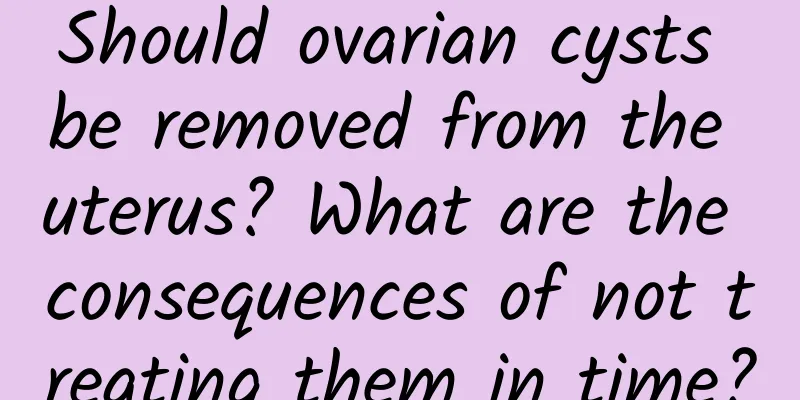Does polycystic ovary cause severe dysmenorrhea?

|
Does polycystic ovary cause severe dysmenorrhea? Polycystic ovary syndrome is a type of endocrine metabolic disease that affects women's menstruation due to endocrine abnormalities. Symptoms include scanty, excessive, premature, and delayed menstruation, but it does not directly cause dysmenorrhea. Patients with dysmenorrhea should consider other primary and secondary factors. The details are as follows: Generally speaking, polycystic ovary does not cause dysmenorrhea, because the disease is caused by excessive androgen levels and luteinizing hormone ratio disorders in the body, and has no direct relationship with dysmenorrhea. This type of patient mainly shows reduced menstruation, irregular menstruation, sparse menstruation, sometimes only one menstruation in a few months, or even amenorrhea. Most polycystic ovary patients have ovulation disorders, so the most serious harm is infertility, insulin resistance, easy to induce obesity, accompanied by hirsutism and acne. Taking relevant drugs under the guidance of a doctor to reduce androgen will cause the menstrual cycle to return to normal. Dysmenorrhea is divided into primary dysmenorrhea and secondary dysmenorrhea. Primary dysmenorrhea is caused by the accumulation of menstrual blood in the uterine cavity and its inability to be discharged normally. This is a non-organic disease that may be related to physical weakness, emotions and dietary factors. It is recommended to maintain good living habits, ensure adequate sleep, proper physical exercise, and eliminate tension, which will help relieve pain. Secondary dysmenorrhea is caused by diseases such as endometriosis, adenomyosis, and pelvic inflammation. Only by treating the primary disease can the symptoms of dysmenorrhea be improved. Polycystic ovary syndrome does not cause dysmenorrhea under normal circumstances, but it can cause infertility. Patients with polycystic ovary syndrome must pay attention to treatment, strictly control their weight, maintain a light diet, take medication to improve menstrual disorders, restore ovulation and fertility functions, and avoid long-term increased risk of endometrial diseases. |
<<: How to eliminate pelvic fluid
>>: How to treat premature ovarian failure?
Recommend
Poor sleep causes many problems! 5 indicators to look at the clues: increased appetite and poor metabolism are all caused by lack of sleep
Feel like you are possessed by a glutton and can&...
How long will acute vaginitis take to heal?
How long will acute vaginitis take to heal? 1. Ac...
Can patients with bacterial vaginosis have sexual intercourse? How is bacterial vaginosis transmitted?
The appearance of bacterial vaginosis makes many ...
How much suffering do uterine fibroids cause women?
In recent years, uterine fibroids have frequently...
Active Couch Potato Movement Changes Lives
For modern people who often say "I'm too...
Five dietary considerations for pelvic effusion
Patients with gynecological inflammation such as ...
Women must always take precautions against cervical erosion
In recent years, with the increasing incidence of...
What does cervical hypertrophy mean?
Cervical hypertrophy is usually caused by chronic...
What is bacterial vaginosis
What is bacterial vaginosis? This is a disease ca...
Precautions for post-abortion care in winter
The temperature is lower in winter, and patients ...
Can I eat garlic for pelvic inflammatory disease? It has a certain bactericidal effect
Many women may have experienced pelvic inflammato...
Supermodel goes crazy for "naked eating" to detoxify and lose weight! The mystery hidden in 48 degrees
Eating healthy is actually not difficult, especia...
What is the best medicine for cervical erosion?
What is the best medicine for cervical erosion? 1...
How long should I stay in bed after laparotomy for uterine fibroids?
After laparotomy for uterine fibroids, you usuall...
Exercise to stretch your legs in 3 easy steps
You can exercise your leg muscles by simply placi...









